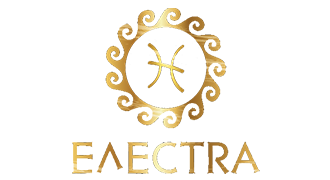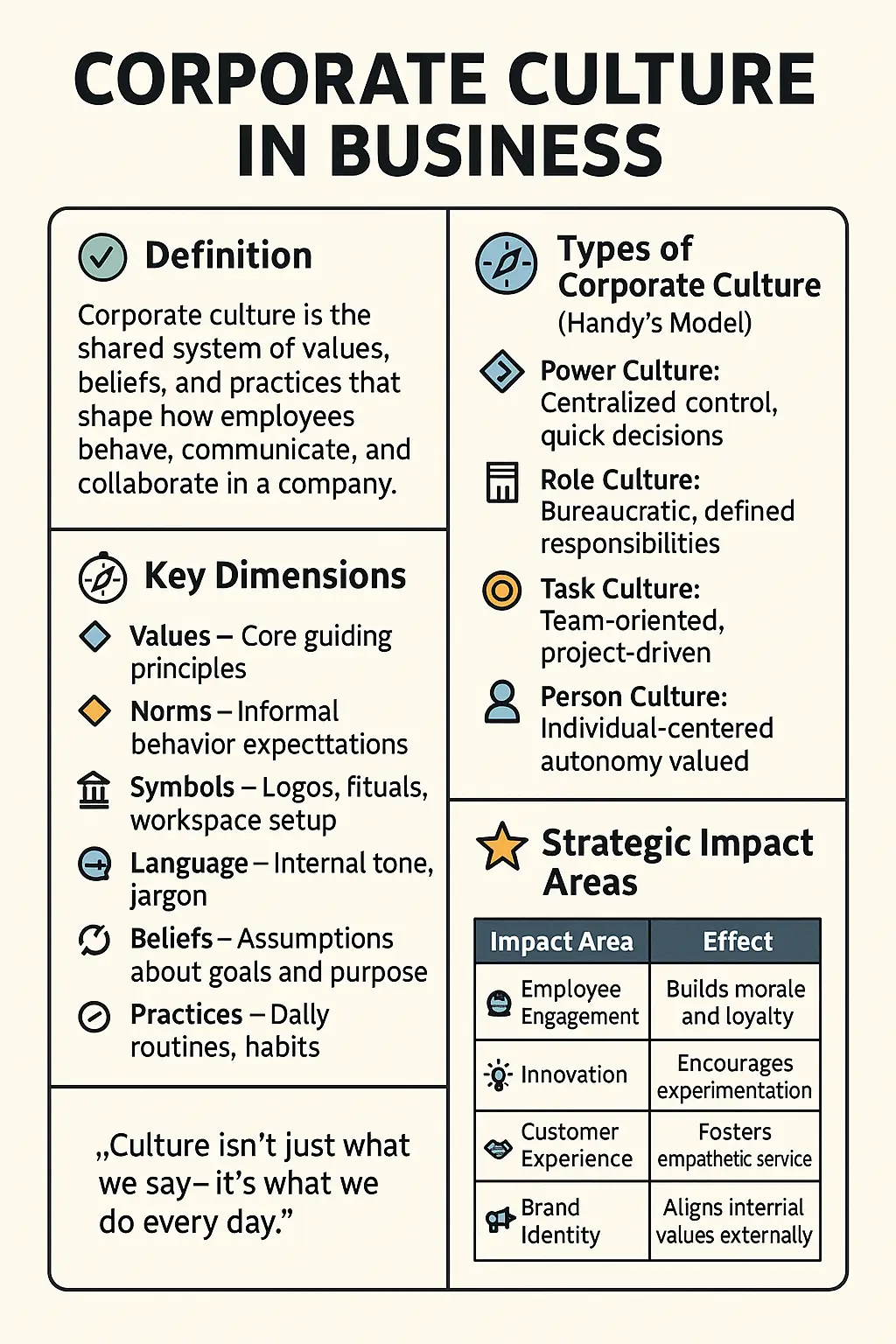🏢 Corporate Culture: The Invisible Force Behind Business Success
Abstract
Corporate culture refers to the shared values, beliefs, norms, and practices that guide behavior within an organization. It influences everything from decision-making to employee engagement and brand identity. A strong corporate culture can drive innovation, attract talent, and enhance customer loyalty, while a misaligned culture can hinder growth and strategic execution. This article explores the concept of corporate culture, its dimensions, types, and impact on business operations and marketing.
1. Introduction
Corporate culture is often described as the “personality” of an organization. It shapes how employees interact, how decisions are made, and how the company is perceived internally and externally. In a competitive and dynamic environment, culture is not just a soft concept—it is a strategic asset that can determine an organization’s success or failure.
2. Definition of Corporate Culture
“Corporate culture is the system of shared assumptions, values, and beliefs that govern how people behave in organizations.”
– Edgar Schein, MIT Sloan School of Management
It is not written in policy manuals or codebooks alone. It is reflected in:
- How leaders lead
- How employees behave
- How customers are treated
- How success and failure are defined
3. Key Dimensions of Corporate Culture
| Dimension | Description |
|---|---|
| Values | Core principles that guide decision-making |
| Norms | Unwritten rules of behavior |
| Symbols | Logos, slogans, dress codes, and rituals |
| Language | Internal jargon and tone used in communication |
| Beliefs | Shared assumptions about the business and its mission |
| Practices | Daily habits, routines, and management styles |
4. Types of Corporate Culture (Handy & Deal and Kennedy Models)
A. Charles Handy’s Four Cultures
- Power Culture – Authority is centralized around a few individuals.
- Suited for small firms and start-ups.
- Role Culture – Defined roles, procedures, and bureaucracy.
- Common in large, structured organizations.
- Task Culture – Focus on teamwork and achieving objectives.
- Ideal for project-based companies or consultancies.
- Person Culture – The individual is central; used in creative agencies or academic institutions.
B. Deal and Kennedy’s Cultural Types
- Tough-Guy Culture – High risk, quick feedback (e.g., sales, sports).
- Work-Hard, Play-Hard Culture – Customer-focused, energetic (e.g., retail, hospitality).
- Bet-Your-Company Culture – Big stakes, long-term (e.g., aerospace, pharmaceuticals).
- Process Culture – Low risk, slow feedback (e.g., government, banks).
5. Corporate Culture and Business Performance
| Impact Area | Cultural Influence |
|---|---|
| Employee Engagement | Motivates or demoralizes staff |
| Decision-Making | Centralized vs. collaborative approaches |
| Customer Service | Internal values reflect in external interactions |
| Innovation | Risk-tolerant cultures foster creativity |
| Recruitment & Retention | A strong culture attracts and keeps top talent |
| Crisis Response | Values guide how companies handle reputational or legal issues |
6. Corporate Culture and Marketing
Culture and marketing are deeply intertwined:
- Brand Identity: Internal culture shapes external brand tone and messaging.
- Customer Experience: A culture of care leads to better service.
- Authenticity: Strong internal alignment increases customer trust.
- Employer Branding: A desirable workplace culture becomes a marketing asset.
Example:
- Zappos is known for a customer-obsessed culture that permeates its brand image.
- Patagonia reflects its environmental values both internally and in marketing.
7. Challenges in Managing Corporate Culture
- Cultural Misalignment: Between leadership and employee behavior.
- Mergers and Acquisitions: Conflicting cultures lead to integration failures.
- Toxic Culture: Poor communication, fear, and blame reduce performance.
- Resistance to Change: Strong cultures may resist strategic shifts.
8. Building and Maintaining a Positive Corporate Culture
| Action | Purpose |
|---|---|
| Define Core Values | Create a shared purpose and guide behaviors |
| Lead by Example | Leadership must embody the culture |
| Recruit for Cultural Fit | Hire individuals who align with your values |
| Foster Open Communication | Build trust and reduce misunderstandings |
| Recognize and Reward | Reinforce desired behaviors and values |
| Invest in Training & Development | Encourage learning and cultural growth |
| Measure Culture Regularly | Use surveys or KPIs to monitor cultural health |
9. Conclusion
Corporate culture is the invisible architecture of an organization. While it may not appear on balance sheets, it defines how work gets done, how innovation unfolds, and how customers experience the brand. Businesses that actively shape and nurture their culture are better positioned for resilience, ethical behavior, and long-term success.
In the age of transparency and stakeholder scrutiny, culture is no longer just HR’s domain—it’s a strategic priority for leadership, marketing, and operations alike.

